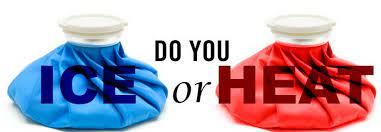Part 1: Crushed ice for 5 minutes is all you need!
Why do we ice?
Contrary to popular belief, ice doesn't have a direct effect on swelling.
It does have a direct effect on numbing pain and reducing blood flow.
The less pain we have, the less swelling we have. Ice helps to reduce pain so that we can mobilise our joints, which has a secondary effect on reducing swelling.
So, when you ice an injury, you are reducing the tissue temperature enough to decrease painful nerve signalling and cell metabolism surrounding the injury site. This reduces the amount of secondary damage in the tissue surrounding the injury, which also helps with healing.
Studies show that you need to decrease your skin temperature to 10 degrees to achieve this effect.
Crushed ice in a plastic bag, applied directly to skin, can achieve this in 5 minutes. It's not the most comfortable thing, but is safe and will achieve the therapeutic effect of improving your healing- rather than just making it feel better.
Is 5 minutes enough?
The length of time depends on the depth of the injury to the surface. Remember that everybody has different levels of body fat, and not all ice bags are built the same. Having extra layers (including bandages and towels) blocks the effect of the cold, and if the goal is to reduce the skin to 10degrees - some cold packs and the old frozen peas bag might not make the cut - despite being a less messy way of doing it!
Part 2: Why does heat always feel so good?
Applying heat is a simple yet effective way to manage muscle and joint stiffness. Deep and penetrating heat not only relieves pain, but enhances your recovery process.
The reason behind this is because heat (similar to cold) sensation stimulates your powerful sensory receptors, which can block the transmission of pain signals (nociception) to your brain. This results in instant and effective pain relief.
With less pain, we can move more, which helps with tissue recovery and joint lubrication. Heat also helps to increase tissue elasticity and stimulates your natural metabolic rate - increasing blood flow and promoting cellular activities to heal the injury.
Part 3: So, do we put on ice or heat?
Both therapies have an effect on changing pain levels, so are therefore effective in helping with injury recovery. The biggest goal is to modify your pain so that you can mobilise the area - motion is lotion!
Ice has the specific effect of reducing cell metabolism and secondary injury from excessive inflammation, and can therefore be more helpful in the acute stage of an injury. This is most important in the first 4 hours following an acute injury. Contrast therapy (both heat and ice) can be helpful for the next stage to promote healing while modifying pain signals. But if you just love the heat - a nice wheat bag will always be helpful to reduce overall pain.

